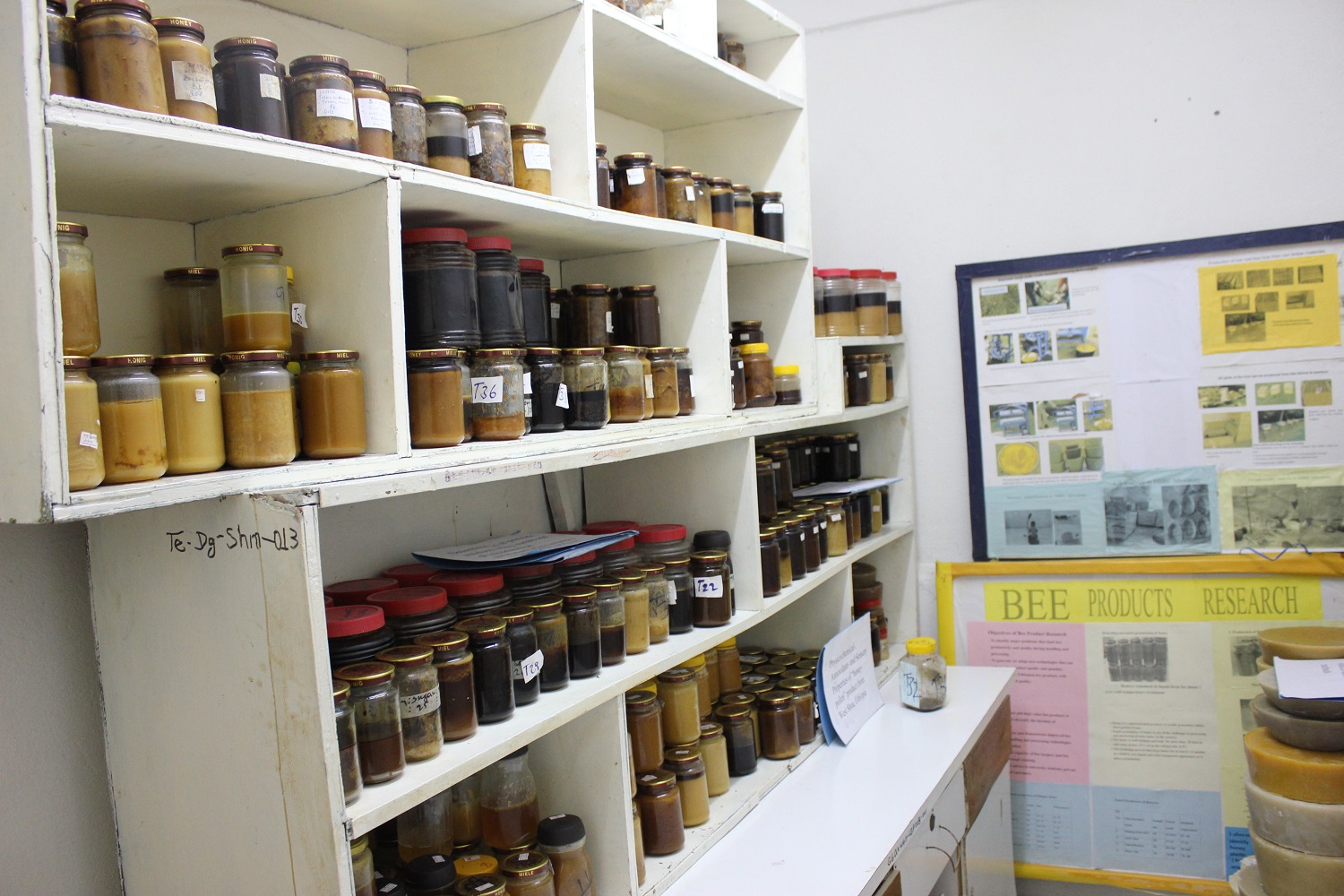Ethiopian honey is good for the economy and for our ecosystem: “Bees are essential to ensuring that our nature is in good shape”
Anagaw Atickem Meshesha is a naturalist specialised in nature conservation and evolutionary genetics. He is the linchpin of a project that aims to establish the production of quality organic honey in Ethiopia and introduce it onto the European market. Why? “Because honey production provides unexpected advantages both for the local economy and for biodiversity”, explains Dr Meshesha.
“Ethiopia is a country with an incredible wealth of landscapes” says Atickem. “To the east, there is the Danakil desert, which lies below sea level and where there is very little life. Further in the interior is the greatest mountainous region in Africa, with peaks reaching up more than 4,000 metres. This great difference in altitude provides Ethiopia with exceptional fauna and flora. As a conservationist, I am trying to find ways of protecting these rich Ethiopian ecosystems.”
Ethiopian bees need protecting, Atickem stresses. “In Ethiopia, New Year’s Day falls in September. And when I was young, our region was covered with a carpet of flowers during this season. Addis Ababa is only in flower during the Ethiopian New Year. But in recent times, this carpet of flowers is much diminished. Of course, this is due to a number of factors, but the absence of pollinators, such as the domestic bee, has without doubt played an important role, says Atickem.
It was his recent research on the cultivation of coffee, Ethiopia’s most important export, that persuaded Atickem to set up a project about bees too. He explained, “For me, it gets really interesting when the potential for a market and protection of the environment go together. This is the case for growing coffee: ideally, the coffee plant needs an environment that offers shade, so coffee and reforestation go hand in hand. The result is flourishing biodiversity in the south of Ethiopia where most coffee is cultivated.”
Modern honey production
Today, Ethiopian honey is produced almost entirely from traditional beehives, which yield an average of 5 to 7 kilos each harvest. “In terms of volume, this is a relatively low rate of production. And the quality is also less good than in modern methods of production, because the requirements for harvesting and stocking are not the same. As a result, there is very little market for Ethiopian honey, even though the country is the largest producer in Africa”, says Atickem. “With our project, we aim to modernise honey production, so that the beehives produce as much as 35 kilos twice a year.”
“In September, the first hives will be set up in three locations, which are very different from each other in terms of the landscape. We will begin in the region of Gambelastreek, in western Ethiopia, close to the South Sudan frontier. The second region is Gera, close to the city of Jimma, in the centre of the country. And the third region where we are beginning, is in the mountains of Anaz, which form part of the central highlands. The environment there is spectacular; a nature reserve where many threatened species live. We work there together with the local Anaz community, a group that has little access to the market, and the Rain Forest Trust, which takes care of the honey production there.”

“The honey production provides advantages both for the local economy and for biodiversity”
The University of Addis Ababa assures the scientific follow-up of the project and the University of Oslo is also participating in the project. “I completed my doctorate in Norway and, together with my colleagues, I have published a lot about biodiversity in Ethiopia” says Atickem. Belgian scientist Alain Pauly, from the Belgian Royal Institute of Natural Science, and Professor Frédéric Francis and his colleagues in the agro-biotech department of ULiege contribute their expertise in honey production.
“The Holeta Ethiopian Centre for Apiculture (HBRC) is helping us to develop modern beehives. Their expertise in the division of bee colonies is crucial for us. With their help, we can divide each swarm of bees into four, which will enable us to increase our production exponentially by a factor of four each season. The HRBC is also responsible for monitoring the hives and training the beekeepers.”
“We hope to be able to have our first harvest in December. We are starting with 40 beehives on each site. Knowing that our hives will produce 60 to 70 kg of honey per year, which we can sell at a market price of around 5 euros per kilo, and that the cost of our hives – which last about seven years – is around USD 92, you can see that there will be a high return. I am convinced that if we manage to control diseases and harmful ants we will be ready to launch, to start production and offer good quality honey.
“My major concern is getting access to the European market. None of our partners knows the market well. We are in contact with various honey importers, but we need to wait and see how things work out. Our website will soon be up and running and perhaps we will know more then. The organic certification will also take a certain length of time. And samples of our first harvest will first be examined in the laboratory to determine their composition. Meanwhile, we can sell our honey on the Ethiopian market.”
“If you know that each hive can house up to 100,000 bees, you realise that you can’t put hundreds in place at a time. This is why it is important that nature is sufficiently robust to be able to provide nectar for the bees. The flora has to be able to adapt” concludes Atickem. “And when Nature is ready, then we too will be ready to put Ethiopian honey on the cards as an export product from Ethiopia.”

